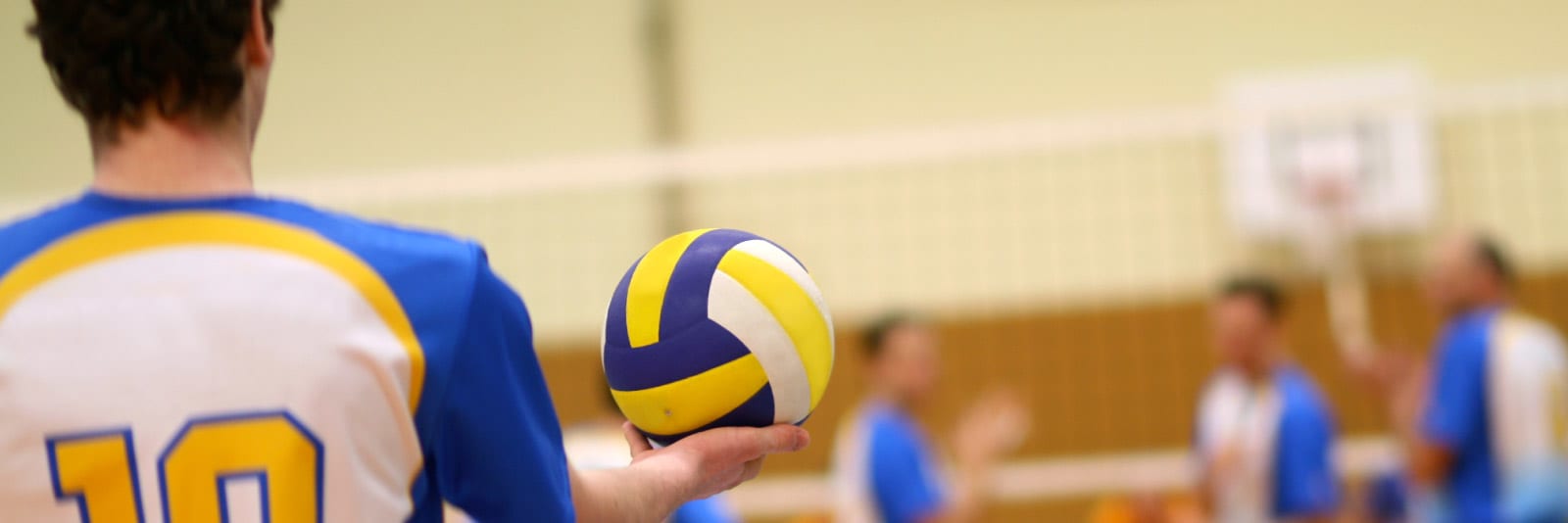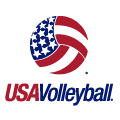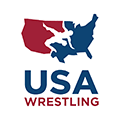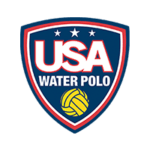How to Get Recruited for College Volleyball

Many athletes and families don’t realize how competitive the recruiting process for college men’s volleyball is. About 4.6 percent of high school men’s volleyball players go on to play in college, and only about 0.6 percent go on to play for an NCAA Division 1 school. In addition to having athletic talent and good grades, athletes and families need to take the recruiting process seriously in order to have success. This section outlines the major steps involved in the men’s volleyball recruiting process and how families can stay on track.
Families also need to keep in mind that every recruiting journey is different from athlete to athlete and from school to school. Some athletes will be recruited right away and some will have a longer recruiting process. Athletes need to stay proactive and not wait for coaches to find them if they want to be successful in recruiting. Read on to learn about the different milestones potential recruits need to hit to succeed on their men’s volleyball recruiting journey.
Quick Links
College volleyball tips for recruiting
Every college recruiting journey is different, but many recruits and families will experience the same milestones along the way. Though these tips should not be treated like they’re set in stone, they can provide guidance throughout the process:
- Discuss as a family if college sports are right for your athlete. After all, getting admitted into the best possible college or pursuing academic scholarships may not line up with earning a roster spot. Then decide if you’re ready to start the recruiting process.
- Determine what division levels to target. This decision should be based on athletic, academic, financial and social fit.
- After researching schools, create a target list of 20–30 colleges.
- Put together at least one volleyball recruiting video to send to interested coaches.
- Reach out to coaches at targeted schools and follow up with all coach communications.
- Give coaches an opportunity to see you in person by attending tournaments, camps and clinics.
- Visit college campuses and meet coaches in person.
- Complete NCAA and/or NAIA academic eligibility requirements and send the appropriate documentation to those organizations.
- Start receiving offers. For each school that has offered a roster spot, determine how much financial aid is needed to attend.
- Choose the school with the best fit and commit! Work out scholarship details with the coach and determine if there is a National Letter of Intent (or an equivalent) that needs to be signed.
How does college volleyball recruiting work for men’s volleyball?
The process of how to get recruited for college volleyball starts with research and self-evaluation. In order to reach their goals, athletes and parents need to figure out what’s attainable for them athletically and academically and set realistic expectations. In this section, we include information about embarking on the recruiting process.
Volleyball scouting and getting noticed by college volleyball coaches
Simply put, playing high school volleyball is not enough to get recruiting attention from most colleges. In volleyball, college coaches expect that their recruits have club experience. But in addition to having club experience, there are a few ways athletes can stand out and get noticed by college coaches. Athletes should be very active in communicating with college coaches and have skills and game highlight videos, both of which they update after major tournaments. Athletes should also make sure they are attending the major tournaments throughout the year in order to get seen by college coaches in person. Setting up an NCSA Recruiting Profile, so that it can be searched by college coaches, can also help get recruiting exposure.
When is the recruiting period for college volleyball?
For NCAA Division 1 and Division 2 colleges, the recruiting period is essentially any period following June 15 after sophomore year that does not fall into a dead period. During the dead period, coaches may not have any in-person contact with recruits or their families. Coaches can still keep in touch with recruits via phone, email, social media and other approved electronic means of communication.
- Division 1: Nov. 9–12, 2020
- Division 2: Nov. 9 (7 a.m.) – 11 (7 a.m.)
All other dates that don’t fit into the dead period are in the contact period, during which coaches can email, text, call, direct message and contact athletes and their parents through any NCAA-approved method. D3 and NAIA colleges do not regulate when college coaches can contact potential recruits and vice versa.
Getting an early start on the recruiting process and setting realistic expectations
Setting realistic expectations about playing in college is extremely important. Athletes should ask themselves the following questions and be honest about the answers:
- Am I ready for the demands of college volleyball? Being a college volleyball player takes up a lot of time and energy, no matter the division level. For most athletes, this will feel like having a full-time job on top of school. In addition to classes and homework, there will be early practices, training sessions, games and travel. Athletes need to be ready for the level of commitment that is expected.
- Am I good enough to play at the college level? Athletes need to critically analyze their current skillset and athleticism, as well as project how much they’ll be able to improve by the time they get to college. Athletes should consult their current coach to discuss their goals of playing at the college level and honestly evaluate their skill level. Athletes can also choose to get evaluated by a third-party service like NCSA.
- What division level(s) am I qualified to play at? The NCAA Division 1, Division 2 and Division 3, NAIA and junior college levels offer hundreds of opportunities for volleyball players. Athletes should talk to their current coach, a qualified third-party like NCSA and college coaches to understand what division levels they might be qualified to compete in. It’s also important to watch collegiate volleyball matches at the different division levels to project which level it’s realistic to compete at in the next few years.
Do I need to play club volleyball to get recruited?
The short answer is yes. College coaches focus on recruiting club volleyball players because club players usually have more volleyball experience from competing almost year-round. Club players also get exposed to top competition and generally get more training than high-school-only players. Additionally, playing at big club tournaments lets club players get seen by college coaches from across the country. A few years of club experience is essential for recruits looking to compete at NCAA Division 1 or high-level Division 2 programs. But before families sign up with a volleyball club, they should make sure the club competes at tournaments and showcases that are attended by college coaches who run programs that the recruit is interested in.
Researching schools and creating a target list
Success in the college men’s volleyball recruiting process is based on doing plenty of research casting a wide net and finding the right college fit. Too often, families try to make their college decision based on a school’s athletic pedigree without considering other factors that will impact the college experience. That’s why a target list of schools should consider athletic, academic, financial and social fit. Athletes should ask themselves:
- What division level am I best suited to compete in?
- Are my grades and test scores good enough to get admitted to the college? Is my preferred major available?
- What is my expected family contribution when comparing athletic scholarships, academic scholarships and need-based aid at different colleges?
- Do I want to be at a big school or small school; a rural or urban environment; to be far from home or close to home?
Considering these questions, start with a list of 20 to 30 schools and then start contacting college coaches and whittling the list down to preferred schools. While putting together the list, organize it into the following categories:
- 5–10 safety schools: These are schools that should be easier to get into. While they may not be top choices, student-athletes would be comfortable going to school there for four years. But remember to still reach out to these coaches early in the recruiting process instead of waiting until other options are not available.
- 10–15 target schools: Target schools are top picks and student-athletes should have a good shot at getting into these schools. Ten is the minimum number of schools student-athletes want in this section of their list, as the best way to negotiate scholarship offers is to have interest from multiple schools.
- 5–10 reach schools: These schools might be just out of reach due to their price tag or level of athletic competition. For most recruits, this list is comprised of Division 1 and academically rigorous colleges. Getting into these schools might be a longshot, but that doesn’t mean it’s not a shot worth taking.
The best path forward is to create as many opportunities as possible, which means starting out with plenty of schools on the list. As recruits start communicating with coaches and learning more about each school, some might bump up a few spots on the list, and others might drop off entirely.
Creating a volleyball recruiting video
College coaches can’t see every potential recruit in person and that’s why their evaluation usually relies on a recruiting video (also called a highlight video). Most of the time, an athlete’s recruiting video makes the first impression on a college coach. That’s why recruits need to spend the time and energy to make a video that shows off their best attributes as a volleyball player.
Volleyball players need to create two different types of videos. The first is a skills video that shows repetitions of attacking, passing, blocking and defense (depending on the recruit’s position). The second is a video of a full volleyball game. Coaches will typically review the skills video first to evaluate the recruit’s fundamentals and technique. Then, they will watch the full game film if they are interested in the athlete.
The skills video is a quick snapshot meant to capture the coach’s attention and should be no more than three to five minutes long. The full game is much longer but families should shorten it by removing dead time (side changes, time outs, substitutions, etc.). To get a rundown of all the skills athletes need to include in their videos based on their position, visit our volleyball recruiting video guidelines page.
Volleyball recruiting tip: Families shouldn’t stop after making one or two high-quality videos. Instead, they should make a recruiting video after every major tournament. This way, they will have new footage to share with college coaches and can send a new recruiting video to coaches of interest every three to four months.
How to contact college volleyball coaches
Communicating with college volleyball coaches is an essential part of the recruiting process. To learn more tips, visit the contacting college coaches page.
- Send an introductory email to the college coach. In the email, include your highlight video and key information, like height, vertical jump and club team name.
- Follow up with a phone call and mention the introductory email you sent.
- Respond to all correspondence from coaches. This includes emails, direct messages on social media, recruiting letters and more.
- Keep following up with coaches. Send them new highlight videos and updated stats. Congratulate them on a recent win or invite them to watch you compete.
Choosing the right tournaments, camps and clinics
Participating in volleyball tournaments that college coaches will be attending is extremely important and should be a focus for serious recruits. Check below for top tournaments that recruits need to participate in. (Some dates may not be finalized so check in with the organization for updates.)
- Great Lakes Region: Boys Holiday Classic (beginning of December)
- Southern California Volleyball Association: Boys Holiday Classic (middle of December)
- AVCA Boys Talent Showcase (late December)
- Southern California Volleyball Association: Junior Boys Classic (middle of June)
- USAV Boys Junior National Championships (beginning of July)
College volleyball camps can also be helpful for recruits who are targeting specific colleges. However, athletes who already have recruiting interest from the college where the camp is located get the biggest benefit. Read more about picking the right camp on our volleyball events page.
Volleyball recruiting tip: Most coaches aren’t going to travel too far outside their region to attend volleyball tournaments. That’s why athletes should attend tournaments in the region where they want to go to college. If an athlete is targeting high-academic colleges in the Northeast, that’s where they should consider attending tournaments.
Managing the volleyball recruiting process
The volleyball recruiting process usually isn’t as action-packed as it sounds. It is common for athletes and families to get stuck in a holding pattern while they wait for a response from college coaches. This may leave them wondering if they are on the right track, which is a common feeling during the managing phase of the recruiting process. To keep the recruiting process moving forward, families can:
- Use new game footage to update recruiting videos. After major tournaments, athletes should put together new recruiting videos and send them out to coaches with key stats from their performances.
- Continue to communicate with college coaches. Athletes can reach out to college coaches every three or four months. Here are 25 reasons to update a college coach.
- Update your NCSA profile with new stats, video, a personal statement or an updated transcript. When coaches search for an athlete’s profile, they’ll see accurate information.
- Go on unofficial and official college visits. Not only is this the only way to really know if a school feels like the right fit, athletes can visit training facilities, see the library, tour dorms, and schedule a time to meet with the coach.
- Continue to update your target list of schools. Schools on a target list can drop off, move up or down on, or even stay right where they are throughout the recruiting process. Families should check the target list every quarter to make sure they’re prioritizing their recruiting appropriately.
- Take the ACT and SAT. Standardized test scores are extremely important for NCAA and NAIA academic eligibility. It’s smart to take the ACT or SAT the fall of junior year so athletes have time to retake the test in the spring if necessary.
- Maintain academic eligibility. To be academically eligible, athletes need to achieve certain grades, test scores and core courses.
- Keep up with deadlines. Make sure to meet deadlines for the following: college applications, final transcripts, proof of graduation, the Free Application for Federal Student Aid (FAFSA), the NCAA Amateurism Certificate, as well as NCAA and NAIA Eligibility Center registration.
Understanding different scholarship offers and negotiating for the best offer
Receiving a scholarship offer is the goal of the recruiting process for most athletes. But there is a lot to consider before a family accepts an athletic scholarship offer. NCAA Division 1 volleyball is an equivalency sport, which means that each team has a scholarship limit and scholarship funds can be broken up and dispersed as the coach sees fit. Usually, this means that full rides are rare and saved only for top recruits. Recruits should also brush up on the different types of offers they can get.
When it comes to negotiating a better scholarship offer, the best bargaining tool is having offers from other schools. The worst-case-scenario for a college coach is to lose a recruit to a rival school. Ideally, athletes want to have serious recruiting interest from five schools to negotiate the best offer. It’s also important to negotiate based on Expected Family Contribution, which outlines how much money a family pays out of pocket after expenses, scholarships and aid are factored in. Read more about scholarship negotiation in our college recruiting guide.
National Signing Day for college volleyball
In 2020, National Signing Day falls on November 11. On this date, recruits can formalize a scholarship offer and make it legally binding by signing a commitment with a college. About 650 NCAA Division 1 and Division 2 schools use the National Letter of Intent (NLI), and NAIA and NJCAA schools have their own version of the NLI to sign. Families need to double-check that they know what they’re agreeing to before signing because the NLI is a legally binding document. By signing the NLI, an athlete agrees to compete at the school for one year, and the school is promising to provide the recruit with the agreed-upon scholarship for that year.
After signing, the recruiting journey is over. Make sure to celebrate this important milestone!
















